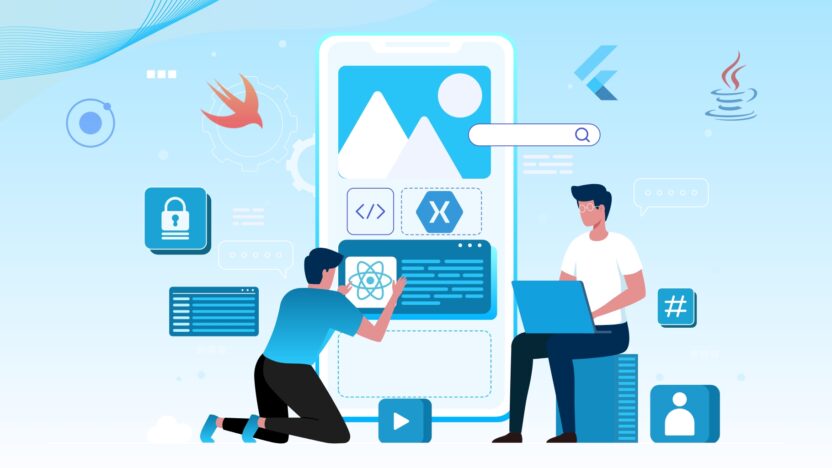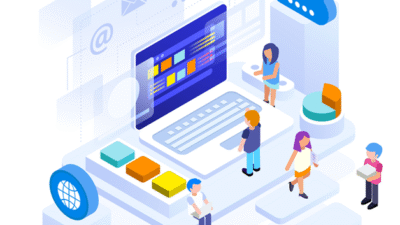In today’s fast-paced digital environment, businesses need scalable, high-performing apps that work seamlessly across platforms—without doubling development time or cost. That’s where Flutter shines. Created by Google, Flutter allows developers to build beautiful, natively compiled apps for mobile, web, and desktop from a single codebase.
This guide explores how to use Flutter for cross-platform app development in 2025 and how partnering with a trusted mobile app development company in Canada like Devherds can help you unlock its full potential.
What Is Flutter?
Flutter is an open-source UI toolkit developed by Google. It allows developers to build applications using a single codebase that works across Android, iOS, web, and even desktop platforms.
Why Flutter?
- Single Codebase for multiple platforms
- High performance thanks to native compilation
- Rich widget library for expressive UI design
- Fast development with hot reload
- Growing community and strong Google support
Why Choose Flutter for Cross-Platform Development?
The cross-platform approach is ideal for businesses looking to:
- Reach more users on both Android and iOS without building two separate apps.
- Reduce development costs.
- Speed up time-to-market.
- Simplify updates and maintenance.
As a leading mobile app development company in Canada, Devherds specializes in using Flutter to build scalable, high-quality apps with a seamless user experience.
Step-by-Step: How to Use Flutter for Cross-Platform App Development
Step 1: Set Up Your Development Environment
To get started with Flutter, install the SDK and set up your IDE (e.g., VS Code or Android Studio).
Tools You Need:
- Flutter SDK
- Dart SDK (included with Flutter)
- Android Studio / Visual Studio Code
- iOS Simulator (Mac only)
- Android Emulator
Once your environment is ready, run flutter doctor in the terminal to check for any missing dependencies.
Step 2: Create a New Flutter Project
In your terminal or IDE:
bashCopyEditflutter create my_flutter_app
cd my_flutter_app
flutter run
Flutter will generate a sample project with a counter app that runs on both Android and iOS. This is your boilerplate to start building your custom app.
Step 3: Structure Your App
Organize your Flutter project into logical directories:
/lib: Main Dart files/assets: Images, fonts, etc./models: Data models/screens: UI screens/widgets: Reusable UI components/services: API or backend integrations
A well-structured app helps with long-term maintainability, especially in enterprise-level projects managed by a professional mobile app development company in Canada like Devherds.
Step 4: Design a Beautiful UI Using Flutter Widgets
Flutter’s core strength is its rich set of customizable widgets.
Common Flutter Widgets:
Scaffold– Layout structureAppBar,BottomNavigationBar– Navigation controlsListView,GridView– Scrollable contentTextFormField,Buttons– Input controlsContainer,Card,Stack– Design and layout
Flutter allows full control over every pixel on the screen, enabling highly branded, fluid user interfaces.
Step 5: Manage State Effectively
State management is crucial in Flutter apps. For simple apps, use setState(), but for scalable apps, opt for:
- Provider
- Bloc (Business Logic Component)
- Riverpod
- Redux
At Devherds, our developers use scalable and maintainable state management strategies tailored to your app’s complexity and performance needs.
Step 6: Integrate Backend and APIs
To make your app dynamic, integrate it with backend services. Flutter supports:
- HTTP requests using the
httppackage - Firebase for real-time databases, authentication, and cloud storage
- GraphQL for more efficient data querying
Our team at Devherds, a top mobile app development company in Canada, has expertise in integrating Flutter apps with scalable backend infrastructures.
Step 7: Test Across Platforms
Testing is essential before deployment. Flutter supports:
- Unit testing: Validating logic and data models
- Widget testing: Testing UI behavior
- Integration testing: End-to-end user flows
Use tools like flutter_test, mockito, and integration_test to create a stable and high-quality application.
As part of our mobile app development services in Canada, Devherds conducts rigorous cross-platform testing to ensure consistent performance on Android, iOS, and web.
Step 8: Build and Deploy
Once development and testing are complete, build for production:
- Android:
flutter build apkorflutter build appbundle - iOS:
flutter build ios
Use Play Store Console and App Store Connect for publishing.
We at Devherds handle the full deployment process, including ASO (App Store Optimization), metadata creation, and compliance with Canadian and global standards.
Benefits of Using Flutter with a Professional Development Company
Working with a trusted mobile application development company in Canada ensures your project gets the right architecture, performance optimization, and post-launch support.
Why Devherds?
✅ Expert Flutter Developers – We’ve built dozens of Flutter apps across industries
✅ Cost-Effective Delivery – Get native-level performance without double the cost
✅ Speed to Market – Launch faster with rapid prototyping and agile sprints
✅ Ongoing Support – Regular updates, performance monitoring, and feature enhancements
✅ Canadian Compliance – Adherence to data privacy laws like PIPEDA
Devherds is proud to be a top mobile app development company in Canada, delivering scalable, secure, and beautiful Flutter apps.
When Should You Use Flutter?
Flutter is a great choice for:
- Startups looking to build MVPs quickly
- Enterprises creating internal tools across devices
- E-commerce apps with dynamic content
- Educational platforms and content-driven apps
- Healthcare or fintech needing cross-platform presence with strict performance standards
Whether you’re a startup or enterprise, Devherds can tailor a solution using Flutter that fits your goals and timeline.
Flutter in 2025 and Beyond: What to Expect
Flutter continues to grow in adoption and capabilities:
- Improved performance with Dart enhancements
- Web and desktop stability (already in beta/stable)
- Support for foldable and wearable devices
- Integration with AI, ML, AR/VR frameworks
Choosing Flutter now ensures your app stays future-ready—and working with a partner like Devherds means you’ll always stay ahead of the curve.
Final Thoughts
Flutter is revolutionizing how apps are built and deployed in a multi-device world. It offers a powerful combination of speed, scalability, and native performance—all from one codebase. But to fully leverage it, you need strategic planning, smart design, and expert execution.
That’s where Devherds, a leading mobile app development company in Canada, comes in. With a dedicated Flutter team, proven methodology, and a deep understanding of cross-platform development, we bring your vision to life—on every screen.



